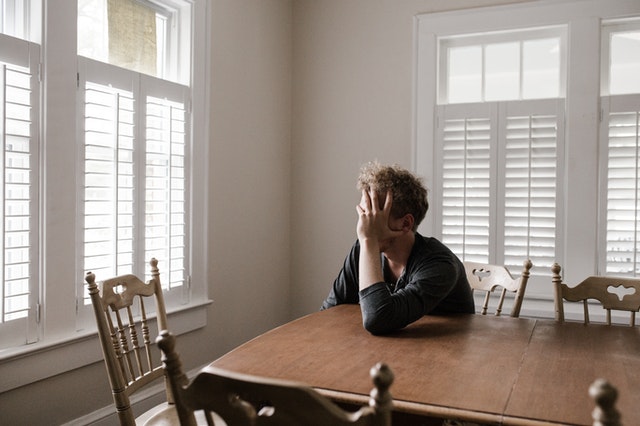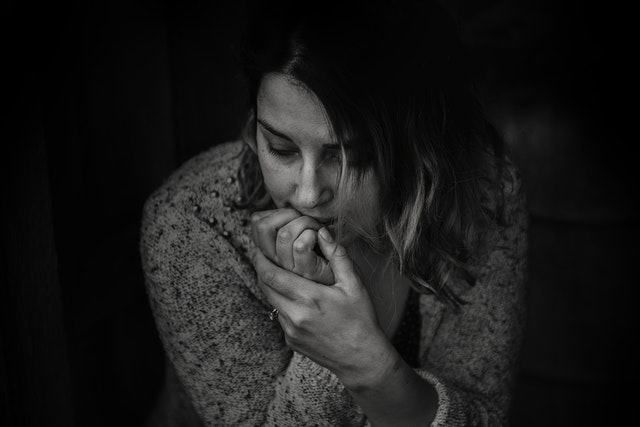We all feel anxious in a relationship. It’s natural human behavior. But what if your anxiety gets the best of you and you start damaging your relationship? That’s what people with an anxious attachment style tend to do.
Today, we’ll delve deep into what anxious attachment style is, what its signs are, and how you can deal with it. `
Table of Contents
What Is Anxious Attachment Style?
Before delving into the nitty-gritty of the anxious attachment style, let’s look at four common attachment styles:
- Secure
- Avoidant
- Disorganized
- Anxious
When a person develops anxious attachment, they always feel insecure in relationships. This attachment usually forms when a person is a child. They can’t live without their caregivers and are inconsolable when the caregiver leaves. When they grow up, they become anxious and insecure when they aren’t with their partner. This leads to jealousy and difficult relationships.
Reasons for Developing Anxious Development Style
Many reasons can collectively contribute to the development of an anxious attachment style. Often, it starts with their parents and how they were brought up. Children who faced inconsistent parenting or their parents died are more likely to develop an anxious attachment to their child.

Sometimes, insensitive parenting can also lead to the development of an anxious development style. When parents don’t care much about their baby, like not picking a child up when they’re crying, it can also cause anxious attachment.
Research says that genetics may also play a role in the development of an anxious attachment style.
Overall, anyone can develop an anxious development style, but it’s more common in children who:
- Were separated from their caregivers at a vital age
- Have been neglected or mistreated in the past
- Had a troubled childhood with physical or sexual abuse
- Were neglected by their caregivers
Some Common Signs of Anxious Attachment Style in Adults
We all get anxious once in a while. If your partner left for home for work an hour ago and hasn’t reached, getting anxious is natural. But if a person gets anxious every time their partner leaves or neglects them, they could be having an anxious attachment issue.
Let’s look at some signs of anxious attachment:
- Lack of trust in others
- Low self-worth or self-importance
- Craves intimacy or closeness
- Always worries their partner will abandon them
- Need constant reassurance that they are loved
- Are very sensitive to their partner’s actions
- Highly emotional, moody, unpredictable, and impulsive
If you or your partner are facing these symptoms, they’re a sign of an anxious attachment style.
Relationship Tips for Anxious Attachment Style
Anxious attachment is a type of mood and personality disorder. It may never go away completely, but you can follow a few steps to suppress its signs and live a normal life. Let’s look at some practical tips you can follow to ease anxiety in any relationship.

Determine Your Needs and Communicate Them
Relationships are a two-way street and not a one-person endeavor. Both you and your partner need to be clear about their values and what they need from the relationship. Ask yourself what you need from this relationship? This could include:
- Trust
- Loyalty
- Security
- Support
- Physical and emotional intimacy
If you can’t figure out what you need, ask yourself why your previous relationships didn’t work out and what was missing in them. Based on your past experiences, determine your needs and put them forward.
However, don’t be needy. Understand your partner’s needs as well by asking them questions. If there’s a clash, solve it, so you don’t face issues later.
Avoid the Anxious-Avoidant Trap
People with an anxious attachment style make this colossal mistake of always dating people that exacerbate their anxiety. They either date someone who’s also insecure or someone who doesn’t care about their partner’s anxiety. In either case, you’ll find yourself in an anxious-avoidant trap.
The best way to overcome this issue is to find someone who gives you a sense of security. Find someone who doesn’t ignore your anxious behavior but acknowledges and embraces it.
Practice and Embrace Detachment
Let’s tap into some self-help tips now. As discussed, anxious attachment is a mood disorder. The good thing about mood disorders is that you can subside them with conscious efforts and practice.
Practicing detachment is the best way to avoid attachment anxiety. You can do it by distancing yourself from your partner. That doesn’t mean you shouldn’t be together, but try to stay away from them whenever possible. For example, you could go shopping alone or spend some time with your friends.
If you think detaching yourself from your partner will ruin your relationship, you’re wrong. Too much intimacy or closeness can be obliterating for a relationship. A relationship becomes stronger when there’s some distance.
Practice Self-Care
When you love yourself, your attachment anxiety will automatically reduce. People have attachment anxiety because they feel nobody loves or cares for them. So, when they’re separated from their partner, they think their partner won’t ever come back.
You can easily reverse this behavior by amping up your self-care. By meditating regularly, working out, and challenging your thoughts, you can get rid of attachment anxiety.
Here’s a pro tip: Keep yourself occupied. When you have nothing to do, you are more likely to have bad thoughts, which will exacerbate your anxiety. But when you do something creative and productive, such as writing, drawing, gardening, etc., anxious thoughts won’t cross your head.
Get Rid of the Protest Behavior
Finally, don’t resort to your protest behavior whenever your anxiety kicks in. Most people with an anxious attachment style let their anxious behavior get the best of them. When they feel threatened, they attempt to make their partner jealous, threaten to leave, or act hostile.
Doing such things will only damage your relationship, so avoid them at all costs.
Wrap Up: Anxious Attachment Style
Many people who have had bad experiences in their past relationships tend to develop an anxious attachment style. Such an attachment style can lead to insecurity and hurt your relationships in the long run. If you have such an attachment style, focus on alleviating your anxiety and insecurity by following the steps discussed above.









